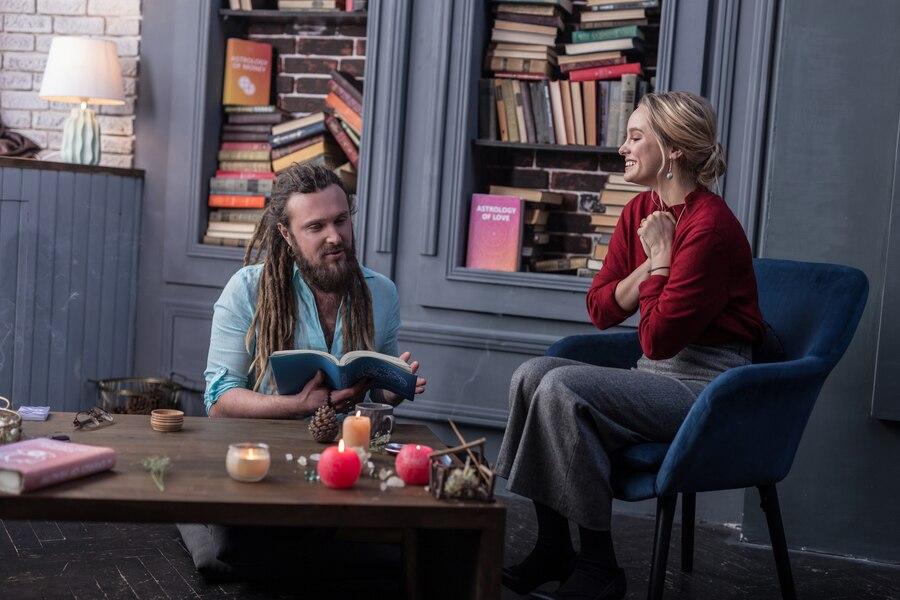The well-dressed persona of a character, the rustle of a ballgown described in prose, or the worn leather boots of a literary vagabond—literature has a peculiar way of shaping how we see style. Personal fashion, often an extension of identity, finds inspiration in the vivid tapestries of storytelling. What we read not only molds our inner world but also influences the way we present ourselves outwardly.
The Power of Storytelling in Style
Stories are more than just entertainment; they are windows into diverse worlds. As readers, we often immerse ourselves in characters’ lives, absorbing their personalities, struggles, and triumphs. And it is precisely top fantasy novels and romantic works that most often become inspiration for fashion lovers. With this absorption comes the subtle influence of their aesthetics. For example, the tailored suits of Jay Gatsby in The Great Gatsby evoke sophistication and yearning, while the bohemian layers of Jo March in Little Women speak of creative independence.
Through storytelling, literature connects us to style in unexpected ways. According to a 2023 survey by the UK-based Fashion Book Club, 68% of readers said their fashion choices were influenced by characters they admired in literature. This demonstrates how stories not only ignite imaginations but also inspire sartorial decisions.
Literature and the Birth of Personal Aesthetics
When we read a novel, poem, or play, we’re essentially holding up a mirror to our own selves, examining the person staring back. Take, for example, Pride and Prejudice. As literary heroine, Elizabeth Bennet has seized our imagination, connecting centuries of enthusiasts: Georgian revivals meshing with everyday avant-gardists. A subtle allure emanates from her very being, balancing quick wit with quiet confidence to create a style that’s authentically hers.
On the other end of the spectrum lies The Picture of Dorian Gray. As you step into Wilde’s world, lavish descriptions of velvet and gold leaf burst forth, transporting you to a domain of high drama and dark allure. Storytelling unfurls like a fabulous cloth, intersecting with fashion to express the tapestry of our lives – flawed, fabulous, and fantastical all at once.
Fashion enthusiasts often talk about “capsule wardrobes.” Could we also speak of “literary wardrobes”? Imagine curating pieces that pay homage to one’s favorite literary icons—a red scarf reminiscent of Anna Karenina, or a striped shirt inspired by Holden Caulfield’s rebellious youth.
Character-Driven Fashion
Characters wield immense power over our imaginations, and by extension, our wardrobes. Consider Holly Golightly from Truman Capote’s Breakfast at Tiffany’s. The black dress and pearls she dons became a timeless symbol of chic simplicity, immortalized by readers and viewers alike. Meanwhile, Sherlock Holmes’ deerstalker hat and trench coat continue to define detective fashion, signaling intellect and curiosity.
These examples show how fiction creates archetypes that readers integrate into their fashion lexicon. Not all styles, however, are meant for replication. Sometimes, they function as contrasts that help refine our tastes. For example, the grunge aesthetics of The Catcher in the Rye might repel those inclined toward more polished looks, solidifying their preference for structure over chaos.
The Aesthetics of Literature
Beyond the characters themselves, literature as a whole inspires aesthetics. The mood of a novel can bleed into the colors, textures, and forms we choose to wear. Gothic novels, with their brooding landscapes and shadowy themes, often influence dark, romantic fashion—think lace, velvet, and deep hues. Meanwhile, pastoral literature might inspire light, breezy outfits that evoke the countryside’s simplicity and charm.
Take Wuthering Heights, for instance. Its windswept moors and dramatic tensions can translate into flowing fabrics and untamed hairstyles. On the other hand, a sci-fi epic like Dune might inspire sleek, futuristic designs with a nod to earthy, desert tones.
It is no coincidence that designers often cite literature as a muse. Dior’s collections inspired by Virginia Woolf or Prada’s nods to Kafka show how deeply literary aesthetics resonate within the world of high fashion.
Reading and Creative Expression
For many, fashion becomes a tangible extension of the intangible—themes, emotions, and philosophies gleaned from books. A reader might channel the free-spirited energy of Jack Kerouac’s On the Road into their love for vintage leather jackets. Another might embrace the disciplined elegance of Agatha Christie’s Hercule Poirot through polished, tailored suits.
Even literary symbolism finds its way into wardrobes. Accessories like brooches, pins, or scarves can subtly reference favorite stories—a tree-shaped pendant for To Kill a Mockingbird, a golden compass necklace for Philip Pullman’s His Dark Materials. These nods may seem small, but they weave literary significance into everyday life.
From Page to Personal Identity
At its core, personal style is a statement of who we are. Literature, with its ability to delve into human complexity, mirrors and amplifies that self-exploration. By immersing ourselves in the literary world, we find pieces of ourselves reflected back, and those reflections often translate into our choices.
For instance, readers of The Alchemist might gravitate toward symbolic pieces—bracelets engraved with meaningful quotes or colors associated with their personal journeys. Conversely, fans of dystopian novels like The Hunger Games might opt for bold, utilitarian pieces that echo themes of resistance and survival.
Literature not only influences what we wear but also how we wear it. A headscarf tied with flair can evoke the rebellious energy of Zora Neale Hurston’s Janie Crawford, while a simple coat can embody the stoicism of Orwell’s Winston Smith. Through fashion, readers bring literary stories into the world.
Closing Thoughts
The bridge between reading and personal style is both intimate and expansive. From drawing direct inspiration from characters to interpreting the atmosphere of an entire genre, literature leaves its imprint on our fashion choices. When we combine the two, we create something uniquely our own: a narrative that is worn, lived, and shared. Who we are, what we wear, and what we read are threads of the same story. And in that story, we are the protagonists, authors, and designers all at once.

